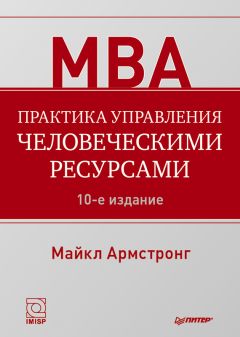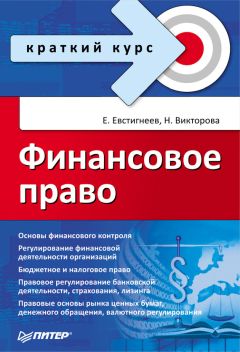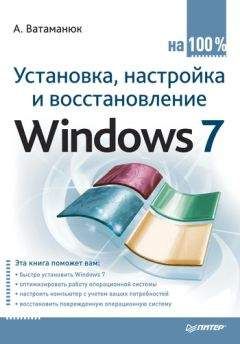Майкл Армстронг - Практика управления человеческими ресурсами
41. Arthur J. В. The link between business strategy and industrial relations systems in American steel mills, Industrial and Labor Relations Review, 45(3), pp. 488–506, 1992.
42. Arthur J. Effects of human resource systems on manufacturing performance and turnover, Academy of Management Review, 37(4), pp. 670–87, 1994.
43. Atkinson G. The Effective Negotiator, Negotiating Systems Publications, Newbury, 1994.
44. Atkinson J. Manpower strategies for flexible organizations, Personnel Management, August, pp. 28–31, 1984.
45. Atkinson J., Meager N. Changing Patterns of Work, IMS/OECD, London, 1986.
46. Bailey T. Discretionary Authority and the Organization of Work: Employee participation and work reform since Hawthorne, Working Paper, Columbia University, New York, 1993.
47. Baillie J. The Changing Nature of Work and the Psychological Contract, IPD (unpublished), 1995.
48. Bales R. F. Interaction Process Analysis, Addison-Wesley, Reading, MA, 1950.
49. Bandura A. Social Learning Theory, Prentice-Hall, Englewood Cliffs, NJ, 1977.
50. Bandura A. Self-efficacy mechanism in human agency, American Psychologist, 37, pp. 122–47, 1982.
51. Bandura A. Social Boundaries of Thought and Action, Prentice-Hall, Englewood Cliffs, NJ, 1986.
52. Barnard С. The Functions of an Executive, Harvard University Press, Boston M. A.,1938.
53. Barney J. Firm resources and sustained competitive advantage, Journal of Management, 17, pp. 99–120, 1991.
54. Bartlett С. A., Ghoshal S. Managing Across Borders: The transnational solution, London Business School, London, 1991.
55. Bartlett С. A., and Ghoshal S. Beyond the M-form: toward a management theory of the firm, Strategic Management Journal, 14, pp. 23–46, 1993.
56. Bartlett С. A., Ghoshal S. Transnational Management Text: Cases and readings on cross-boarder Management, Harvard Business School Press, Boston, MA, 2000.
57. Bass В. М., Vaughan J. A. Training in Industry: The management of learning, Tavistock, London, 1966.
58. Bates R. A., Holton E. F. Computerised performance monitoring: a review of human resource issue, Human Resource Management Review, Winter, pp. 267–88, 1995.
59. Beardwell I. Voices on, People Management, 28 May, pp. 32–36, 1998.
60. Beatty R. W., Huselid M. A., Schneier С. Е. Scoring on the business scorecard, Organizational Dynamics, 32(2), pp. 107–21, 2003.
61. Becker В. Е., Gerhart S. The impact of human resource management on organizational performance: progress and prospects, Academy of Management Journal, 39(4), pp. 779–801, 1996.
62. Becker В. E., Huselid M. A., Pickus P. S., Spratt M. F. HR as a source of shareholder value: research and recommendations, Human Resource Management, Spring, 36(1), pp. 39–47, 1997.
63. Becker В. E., Huselid M. A., Ulrich D. The HR Scorecard: Linking people, strategy, and performance, Harvard Business School Press, Boston, MA, 2001.
64. Beckhard R. Organization Development: Strategy and models, Addison-Wesley, Reading, MA, 1969.
65. Beckhard R. A model for the executive management of transformational change in G Salaman, (ed) Human Resource Strategies, Sage, London, 1989.
66. Beer M. Performance appraisal – dilemmas and possibilities, Organization Dynamics, Winter, pp. 24–36, 1981.
67. Beer M. Reward systems, in M. Beer, В. Spector, P. R. Lawrence, D. Quinn Mills, Managing Human Assets, New York, The Free Press, 1984.
68. Beer M., Ruh R. A. Employee growth through performance management, Harvard Business Review, July/August, pp. 59–66, 1976.
69. Beer M., Spector В. Corporate transformations in human resource management, in R. Walton, P. Lawrence (eds) HRM Trends and Challenges, Harvard University Press, Boston, MA, 1985.
70. Beer M., Eisenstat R., Spector В. Why change programs don’t produce change, Harvard Business Review, November/December, pp. 158–66, 1990.
71. Beer M., Spector B., Lawrence P., Quinn Mills D., Walton R. Managing Human Assets, The Free Press, New York, 1984.
72. Belbin M. Management Teams: Why they succeed or fail, Heinemann, Oxford, 1987.
73. Bell W., Hanson С. Profit Sharing and Profitability, Kogan Page, London, 1987.
74. Bennis W. Organizational Development, Addison-Wesley, Reading, MA, 1960.
75. Bennis W., Nanus В. Leaders, Harper & Row, New York, 1985.
76. Bento R., Ferreira L. Incentive pay and organisational culture, in W Bruns (ed) Performance Measurement, Evaluation and Incentives, Harvard Business School Press, Boston, MA, 1992.
77. Berlet К., Cravens D. Performance Pay as a Competitive Weapon, Wiley, New York, 1991.
78. Berridge J. Human resource management in Britain, Employee Relations, 14(5), pp. 62–85, 1992.
79. Bessant J., Caffyn S., Gilbert J., Harding R. Rediscovering continuous improvement, Technovation, 14(3), pp. 17–29, 1994.
80. Bevan S., Barber L., Robinson D. Keeping the Best: A practical guide to retaining key employees, Institute for Employment Studies, Brighton, 1997.
81. Bevan S., Thompson M. Performance management at the cross roads, Personnel Management, November, pp. 36–39, 1991.
82. Bibbings R. Hearsay and heresy, The RoSPA Occupational Health and Safety Journal, July, pp. 51–52, 2003.
83. Billson I. How just-in-time training can support business-led competency development, Competency, Spring, pp. 21–24, 1998.
84. Birchall D., Lyons L. Creating Tomorrow’s Organisation, Pitman, London, 1995.
85. Blackburn R. M. and Mann R. The Working Class in the Labour Market, Macmillan, London, 1979.
86. Blackler F. Knowledge, knowledge work and experience Organization Studies, 16(6), pp. 16–36, 1995.
87. Blake P. The knowledge management explosion, Information Today, 15(1), pp. 12–13, 1988.
88. Blake R., Mouton J. The Managerial Grid, Gulf Publishing, Houston, 1964.
89. Blake R., Shepart H., Mouton J. Breakthrough in Organizational Development, Harvard Business Review, 42, pp. 237–58, 1964.
90. Blinkorn S., Johnson С. The insignificance of personality testing, Nature, 348, pp. 20–27, 1990.
91. Bloom M., Milkovich G. T. Rethinking international compensation, Compensation and Benefits Review, April, pp. 17–27, 1998.
92. Blyton P., Turnbull P. (eds) Reassessing Human Resource Management, Sage Publications, London, 1992.
93. Bontis N. There’s a price on your head: managing intellectual capital strategically, Business Quarterly, Summer, pp. 4–47, 1996.
94. Bontis N. Intellectual capital: an exploratory study that develops measures and models, Management Decision, 36(2), pp. 63–76, 1998.
95. Bontis N., Dragonetti N. C., Jacobsen К., Roos G. The knowledge toolbox: a review of the tools available to measure and manage intangible resources, European Management journal, 17(4), pp. 391–402, 1999.
96. Boudreau J. W. Utility analysis, in Human Resource Management: Evolving roles and responsibilities, ed. L Dyer, Bureau of National Affairs, Washington, DC, 1988.
97. Bower J. L. Business policy in the 1980s, Academy of Management Review, 7(4), pp. 630–38, 1988.
98. Bowey A. The Effects of Incentive Pay Systems, Department of Employment, Research Paper 36, DOE, London, 1982.
99. Bowles M. L., Coates G. Image and substance: the management of performance as rhetoric or reality?, Personnel Review, 22(2), pp. 3–21, 1993.
100. Boxall P. F. Strategic HRM: a beginning, a new theoretical direction, Human Resource Management Journal, 2(3), pp. 61–79, 1992.
101. Boxall P. F. The significance of human resource management: a reconsideration of the evidence, The International Journal of Human Resource Management, 4(3), pp. 645–65, 1993.
102. Boxall P. F. Placing HR strategy at the heart of the business, Personnel Management, July, pp. 32–35, 1994.
103. Boxall P. F. The strategic HRM debate and the resource-based view of the firm, Human Resource Management Journal, 6(3), pp. 59–75, 1996.
104. Boxall P. F. Human resource strategy and competitive advantage: a longitudinal study of engineering consultancies, Journal of Management Studies, 36(4), pp. 443–63, 1999.
105. Boxall P., Purcell J. Strategic Human Resource Management, Palgrave Macmillan, Basingstoke, 2003.
106. Boyatzis R. The Competent Manager, Wiley, New York, 1982.
107. Boyett J. H., Conn H. P. Maximum Performance Management, Glenbridge Publishing, Oxford, 1995.
108. Bradley P., Hendry С., Perkins P. Global or multi-local? The significance of international values in reward strategy, in International HRM: Contemporary issues in Europe, ed С Brewster and H Harris, Routledge, London, 1999.
109. Braverman H. Labour and Monopoly Capital, Monthly Review Press, New York, 1974.
110. Brayfield A. H., Crockett W. H. Employee attitudes and employee perfor mance, Psychological Bulletin, 52, pp. 346–424, 1955.
111. Brewster С. Developing a «European» model of human resource management, The International Journal of Human Resource Management, 4(4), pp. 765– 84, 1993.
112. Brewster С. Strategic Human Resource Management: the value of different paradigms, in Strategic Human Resource Management, ed R. S. Schuler and S. E. Jackson, Blackwell, Oxford, 1999.
113. Brewster С. European perspectives of human resource management, Human Resource Management Review, 14(4), pp. 365–82, 2004.
114. Brewster С., Holt Larsen H. Human resource management in Europe: evidence from ten countries, International Journal of Human Resource Management, 3(3), pp. 409–34, 1992.
115. Brewster С., Lloyd J. The changing face of union negotiations, Human Resources, Summer, pp. 148–52, 1994.
116. Brockbank W., Ulrich D., Beatty D. HR professional development: creating the future creators at the University of Michigan Business School, Human Resource Management, 38, Summer, pp. 111–17, 1999.
117. Brown D. Presentation to the Compensation Forum meeting, February, 1998.
118. Brown D. Reward Strategies, From Intent to Impact, CIPD, London, 2001.
119. Brown J. А. The Social Psychology of Industry, Penguin Books, Harmondsworth, 1954.
120. Brown D., Armstrong M. Terms of endearment, People Management, 11 September, pp. 36–38, 1997.
121. Brown D., Armstrong M. Paying for Contribution, Kogan Page, London, 1999.
122. Brumbach G. В. Some ideas, issues and predictions about performance management, Public Personnel Management, Winter, pp. 387–402, 1988.
123. Buchanan D. Job enrichment is dead: long live high performance work design!, Personnel Management, May, pp. 40–43, 1987.
124. BuchananD., Huczynski A. Organizational Behaviour, Prentice-Hall, Englewood Cliffs, NJ, 1985.
125. Bulla D. N., Scott P. M. Manpower requirements forecasting: a case example, in Human Resource Forecasting and Modelling, ed D. Ward T. P. Bechet and R. Tripp. The Human Resource Planning Society, New York, 1994.
126. Burdett J. О. What is empowerment anyway? Journal of European Industrial Training, 15(6), pp. 23–30, 1991.
127. Burgess S., Rees H. Job tenure in Britain, Economic Journal, March, pp. 334– 44, 1996.
128. Burgoyne J. Competency Approaches to Management Development, Centre for the Study of Management Learning, University of Lancaster, 1988a.
129. Burgoyne J. Management development for the individual and the organization, Personnel Management, June, pp. 40–44, 1988b.
130. Burgoyne J. As reported in Personnel Management Plus, May, p. 7, 1994.
131. Burgoyne J. Design of the times, People Management, 3 June, pp. 39–14, (1999).
132. Burner D. Managing Change: A Strategic Approach to Organizational Dynamics, 2nd edn, Pitman, London, 1996.




